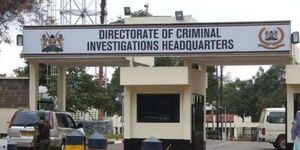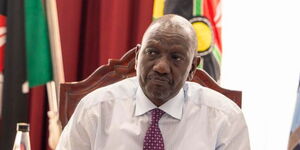Security agencies have intercepted and foiled 40 planned terror attacks over the last three years, marking one of the most significant periods of security stabilisation in the country’s recent history.
New government data seen by Kenyans.co.ke shows that these gains are increasingly being positioned as a core pillar of President William Ruto’s vision of building a first-world nation.
According to the data, most of the disrupted attacks, largely concentrated in the Coast and Northeastern regions, were stopped at the recruitment, logistics, or movement stages.
Officials attribute this to unprecedented intelligence coordination between the National Intelligence Service (NIS), the Anti-Terrorism Police Unit (ATPU), the Directorate of Criminal Investigations (DCI) and the Kenya Defence Forces (KDF).
Through this multi-agency approach, security teams have dismantled extremist cells in Lamu, Garissa, Wajir and Mandera, preventing mass-casualty incidents long before they reached execution.
“Border surveillance has intensified, with thousands of irregular border crossings intercepted and over 1,200 persons of security interest profiled or referred for investigation through the LAPPSET, Mkokoni, Mandera, Hulugho, and Kiunga corridors,” reads part of a report reviewed by this publication.
The strengthened border framework, combined with community-based early warning systems, has contributed to one of the most dramatic drops in terror-related incidents in nearly a decade. Data shows that IED attacks have fallen by 55 per cent, and the Kenya-Somalia frontier has recorded its lowest level of militant movement in seven years.
These nationwide gains have been reinforced by significant investments in policing and urban safety under President Ruto’s administration. Over the past three years, 1,899 surveillance cameras and 281 Automatic Number Plate Recognition (ANPR) cameras have been deployed across 664 sites under the Safe City and Safe County programmes.
While Nairobi has the highest concentration, expansion is underway in Mombasa, Kisumu, Nakuru, Eldoret and key transport corridors.
According to the government, these investments have already produced measurable results, contributing to a 13–18 per cent decline in urban violent crime, including carjackings, muggings and organised gang activity.
Beyond counter-terrorism and urban policing, officials view the renewed security environment as a silent engine powering the country’s broader economic transformation. By stabilising regions long affected by insecurity, the state argues that it is lowering business costs, protecting supply chains, strengthening investor confidence, and giving communities space to work, trade and rebuild.
Government insiders say this foundation is essential to President Ruto’s broader ambition, that Kenya can only pursue the long journey toward first-world status if it first guarantees national stability, border integrity and safe communities.
As President Ruto enters his fourth year in office, security agencies are gearing up for expanded capacity, improved welfare, and further technological upgrades, measures that the administration believes will anchor the next phase of Kenya’s economic and social transformation.












